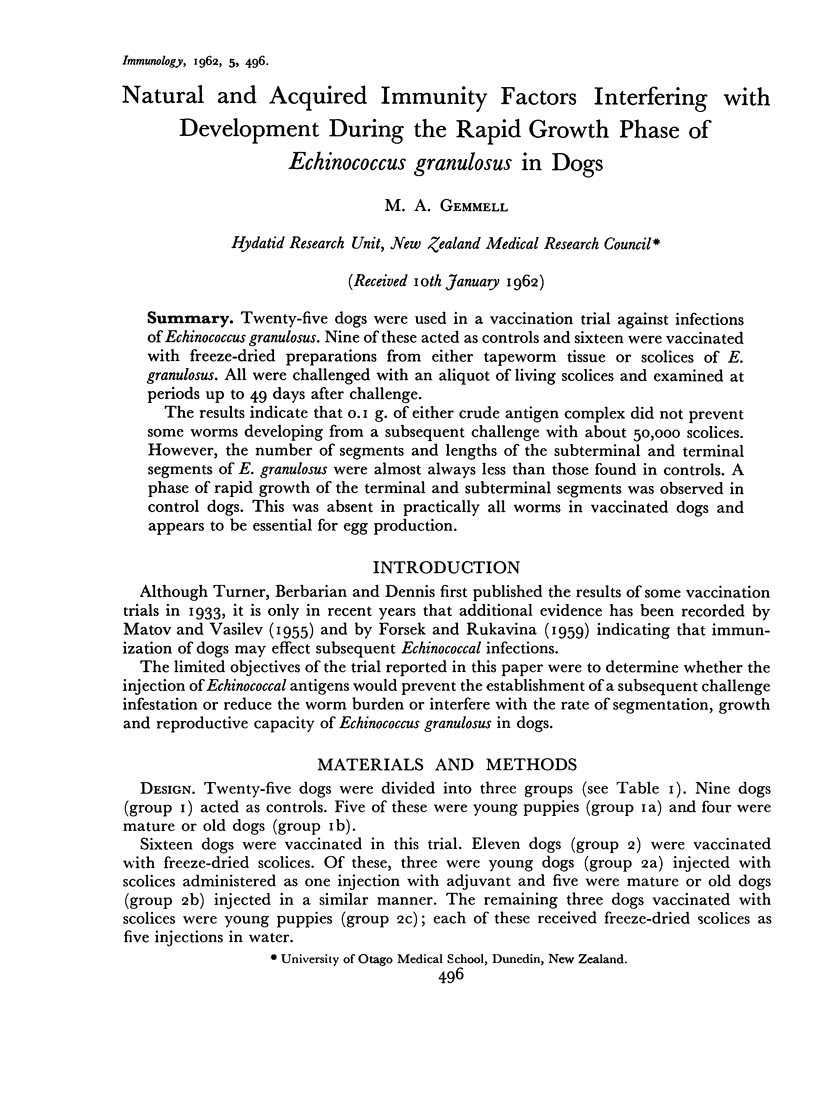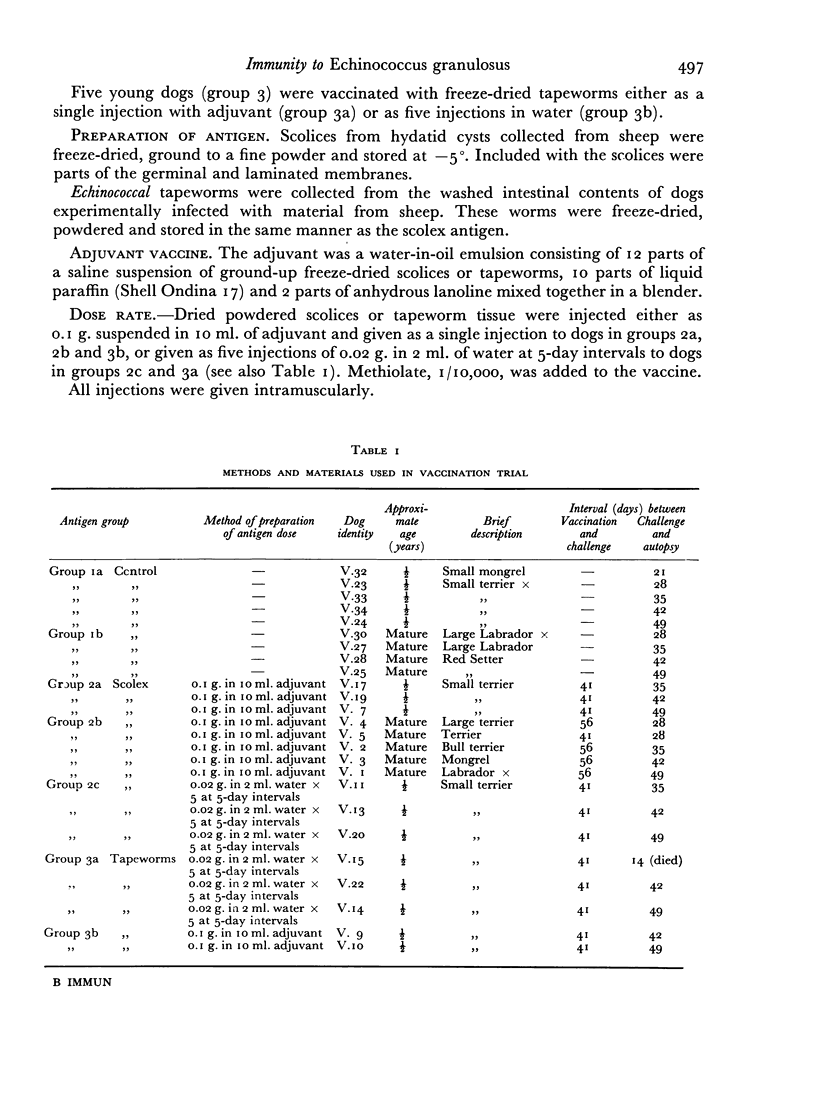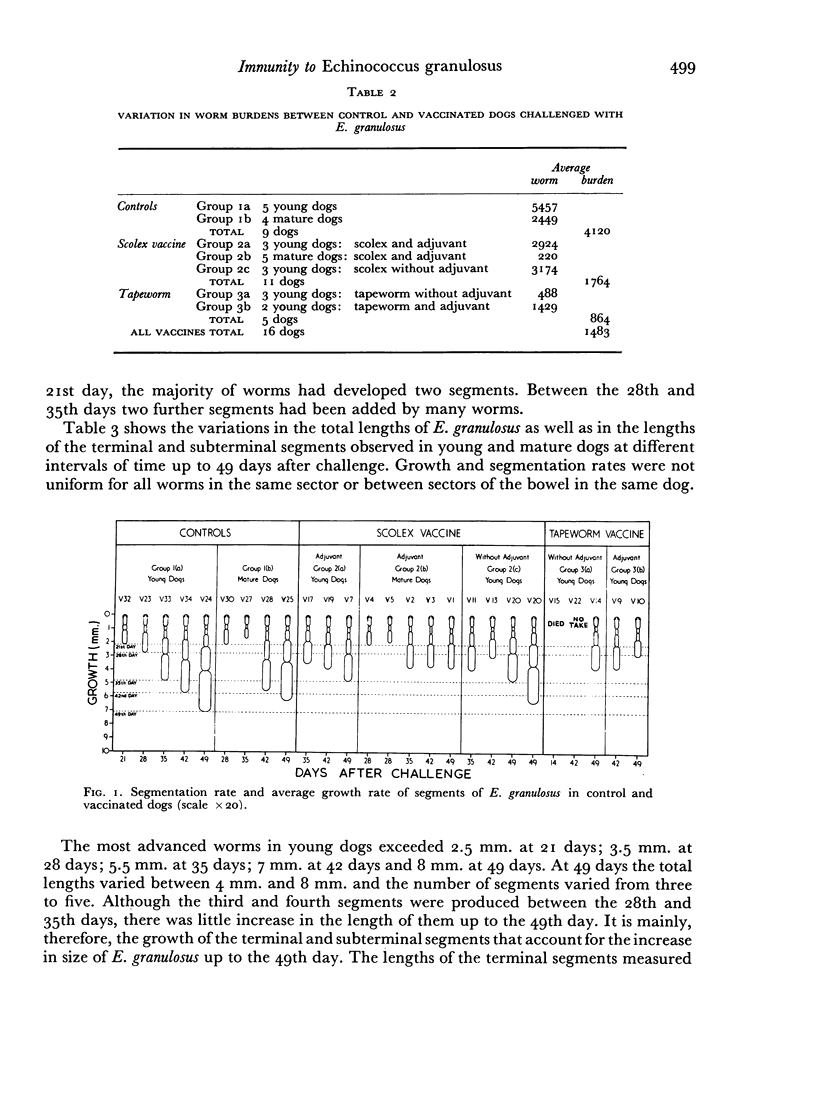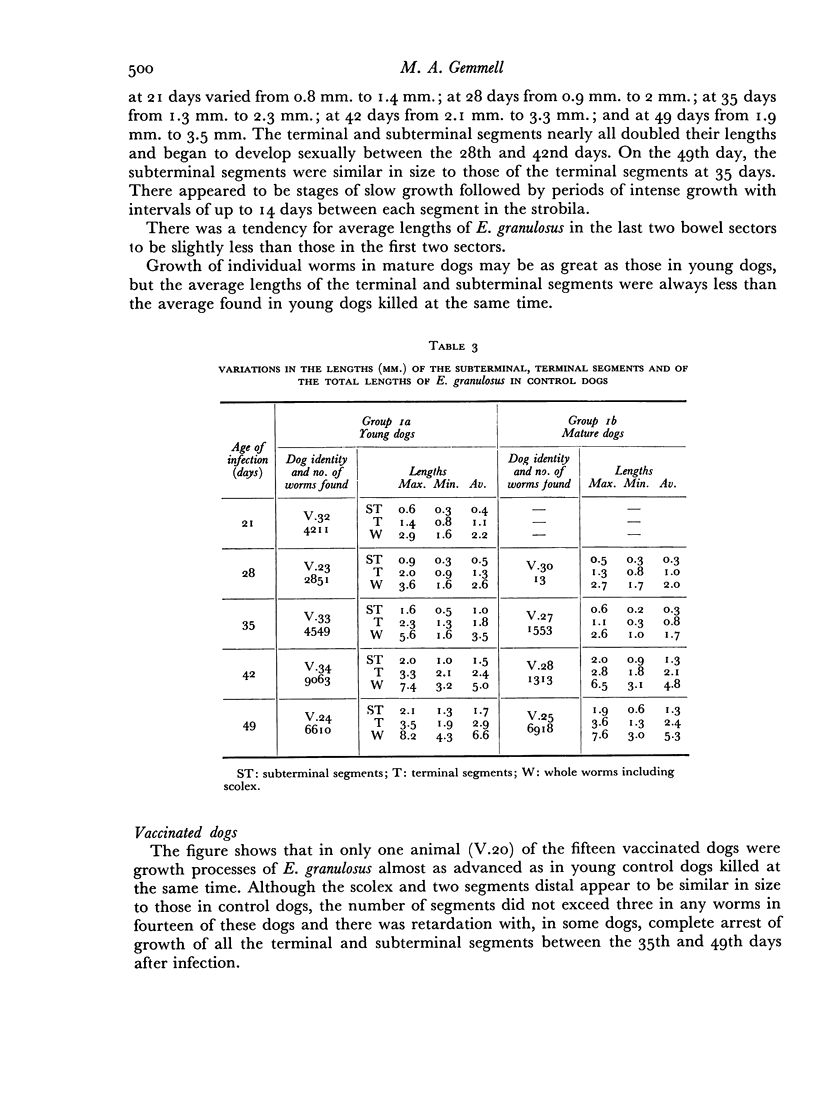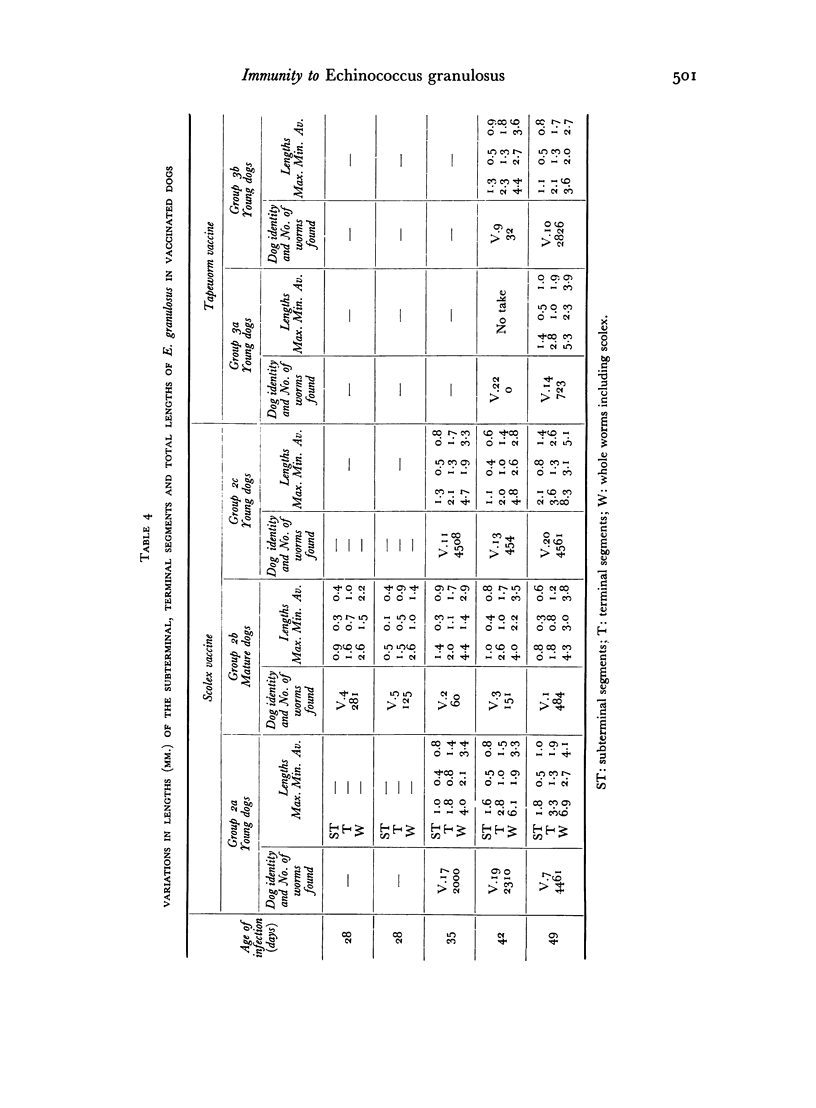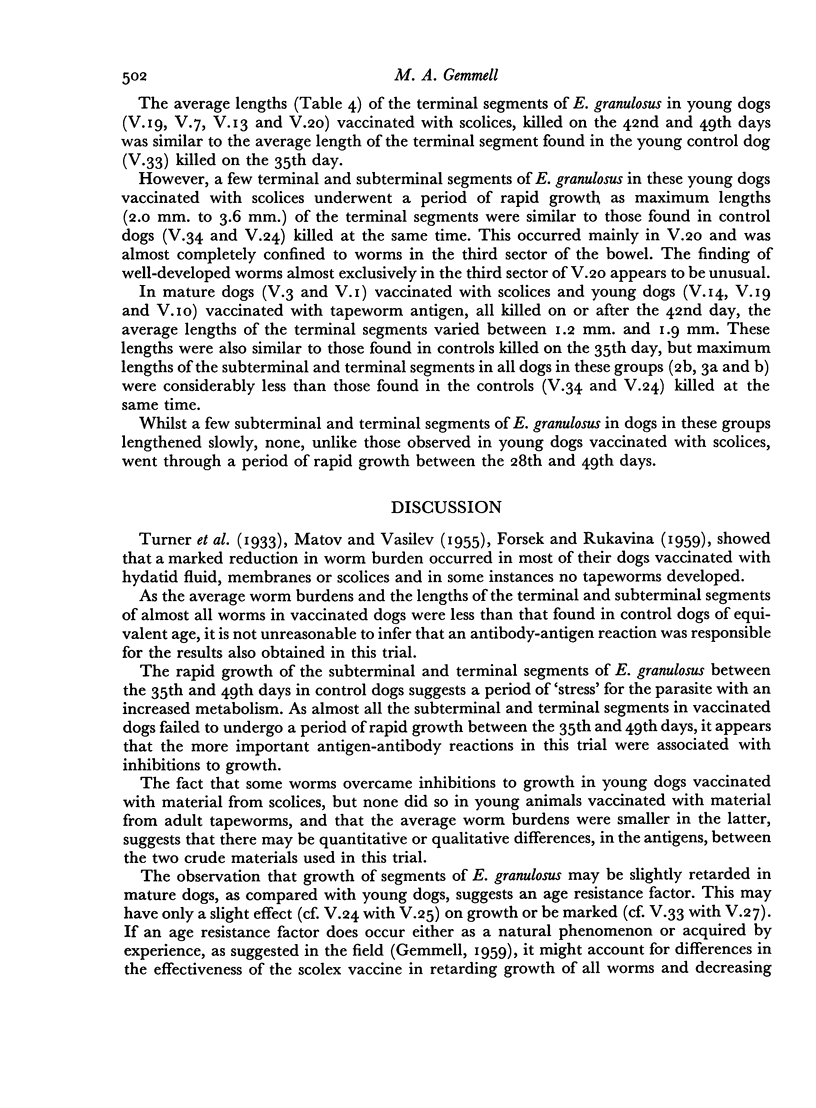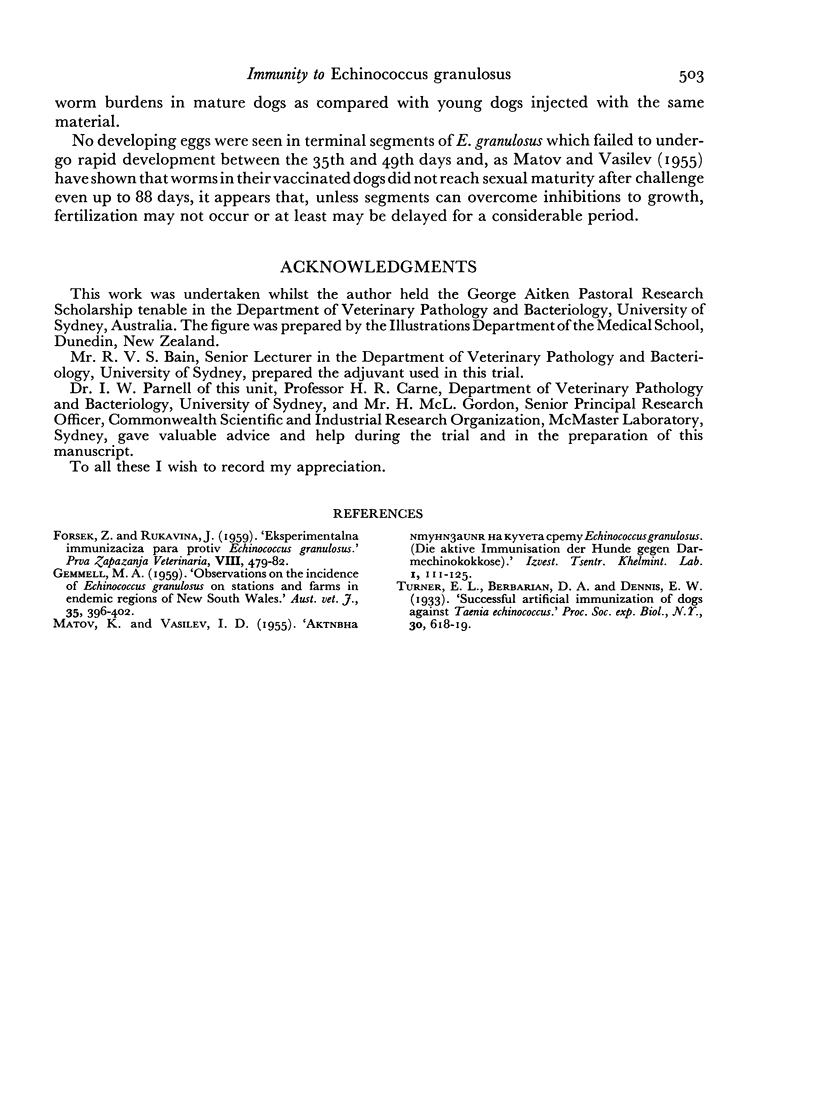Abstract
Twenty-five dogs were used in a vaccination trial against infections of Echinococcus granulosus. Nine of these acted as controls and sixteen were vaccinated with freeze-dried preparations from either tapeworm tissue or scolices of E. granulosus. All were challenged with an aliquot of living scolices and examined at periods up to 49 days after challenge.
The results indicate that 0.1 g. of either crude antigen complex did not prevent some worms developing from a subsequent challenge with about 50,000 scolices. However, the number of segments and lengths of the subterminal and terminal segments of E. granulosus were almost always less than those found in controls. A phase of rapid growth of the terminal and subterminal segments was observed in control dogs. This was absent in practically all worms in vaccinated dogs and appears to be essential for egg production.
Full text
PDF